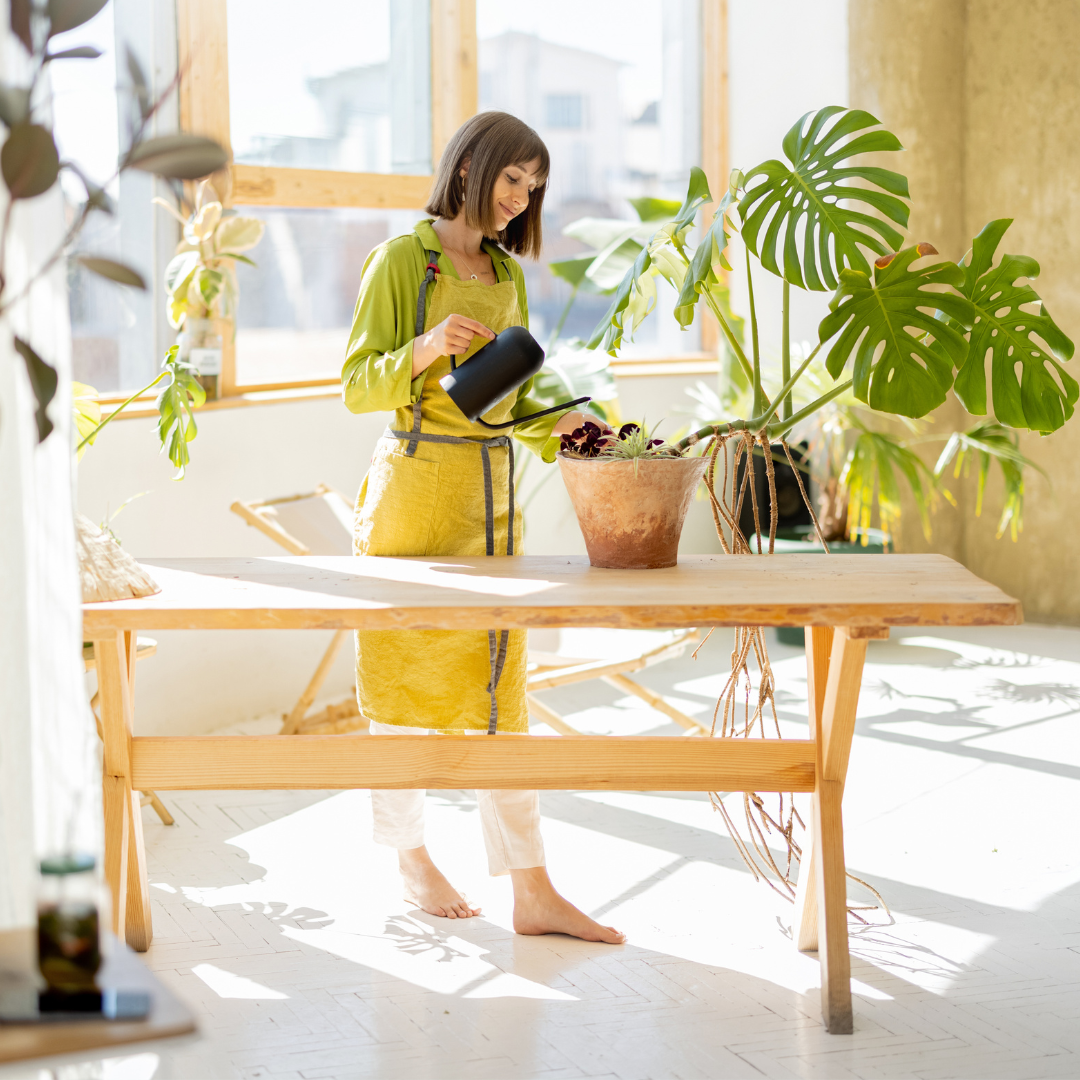Although we are all aware that it is possible to both overwater and drown houseplants, have you ever considered how the timing of watering affects your indoor jungle? In order to learn more about the optimal times to grab your watering can—in the morning, at midday, or at night—we spoke with an expert. This is what they advised.
- Plants should be watered in the morning since this will ensure that the water reaches the roots before the heat of the day causes it to evaporate. Additionally, this allows the plant to take in the water before the sun gets too hot and begins to evaporate the moisture.
- Avoid watering plants in the middle of the day because this can stress the plant and make it more prone to illness. Watering plants during the warmest part of the day can cause the water to evaporate too quickly.
- Water plants deeply but sparingly: In general, it’s preferable to water plants deeply but sparingly than shallowly yet regularly. This promotes the development of deep roots and drought resistance.
- Before watering, examine the soil to ensure that the plant genuinely requires it. Don’t only rely on the watering schedule. Before watering, the soil needs to be completely dry about an inch below the surface.
- Pay attention to the weather because you might need to water your plants more frequently during hot, dry conditions. You might need to water them less frequently in cooler, wetter weather.
The best technique to water a plant depends depend on the type of plant you are watering, the size of the plant, the environment and weather, as well as other factors.
Following are some general pointers for watering plants:
- Plants should only be watered from the base up to prevent fungal diseases from spreading to the foliage. Instead, hydrate the soil near the plant’s base.
- Use a hose or a watering can to water your plants: A hose is more practical for larger plants or gardens, while a watering can works well for smaller plants. When utilizing a hose, be careful to utilize a nozzle to regulate the water flow.
- Water deeply and gradually: Rather than letting the water run off the surface, let it gently percolate into the soil. This promotes deep root growth and aids in getting water to the plant’s roots.
- Mulch around plants: Mulch can be beneficial in dry conditions and helps to retain moisture in the soil.
- Consider using drip irrigation: Since water can be given directly to plant roots, drip irrigation systems can be a practical approach to hydrate plants.
It’s crucial to keep in mind that overwatering plants might result in issues like root rot. Before watering a plant, always examine the soil to be sure it genuinely needs it.
“Plant your tiny seeds and keep watering them every day. Soon, they will grow”
How often should you water your Plants?
inframe: Monstera Thai Constellation
When watering plants in southern-facing windows, which frequently receive a lot of direct sunlight, take extra care.
The timing of watering becomes somewhat less crucial as the light becomes less intense. Therefore, when the seasons change, so will your plants’ watering requirements. You’ll probably need to reduce your watering schedule in the fall and winter since plants slow down or become dormant as a result of less light and lower temperatures.
More Information
We would love to hear your feedback and suggestions. Let’s connect with us, you will get more benefits. Thank you for your kindness and support
- website www.binatropicals.com
- Telp/ WA +62 851-7222-2420 click here
- DM on @binatropicals

